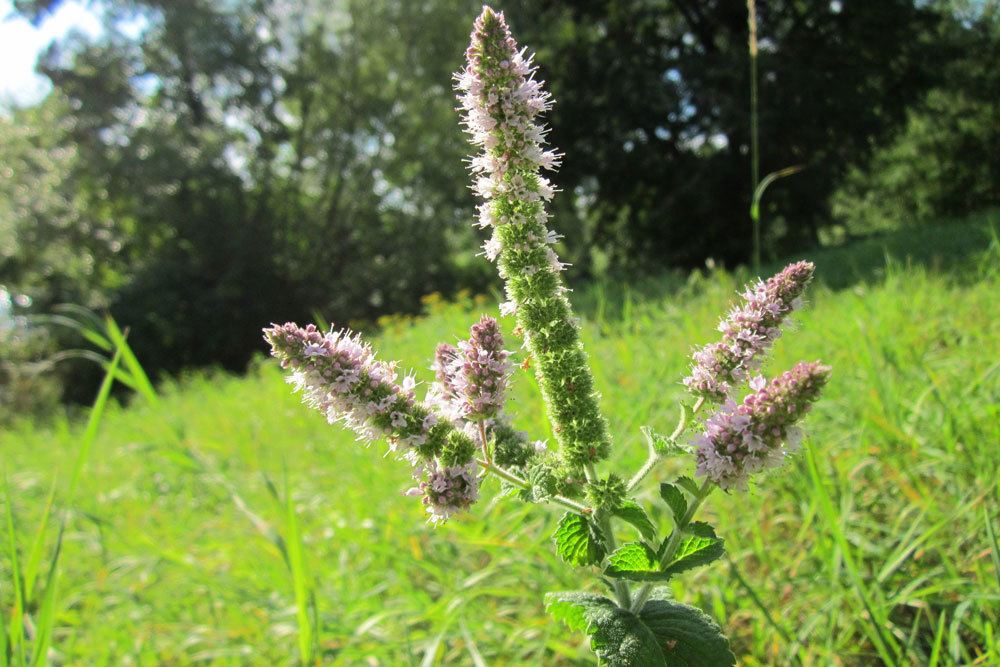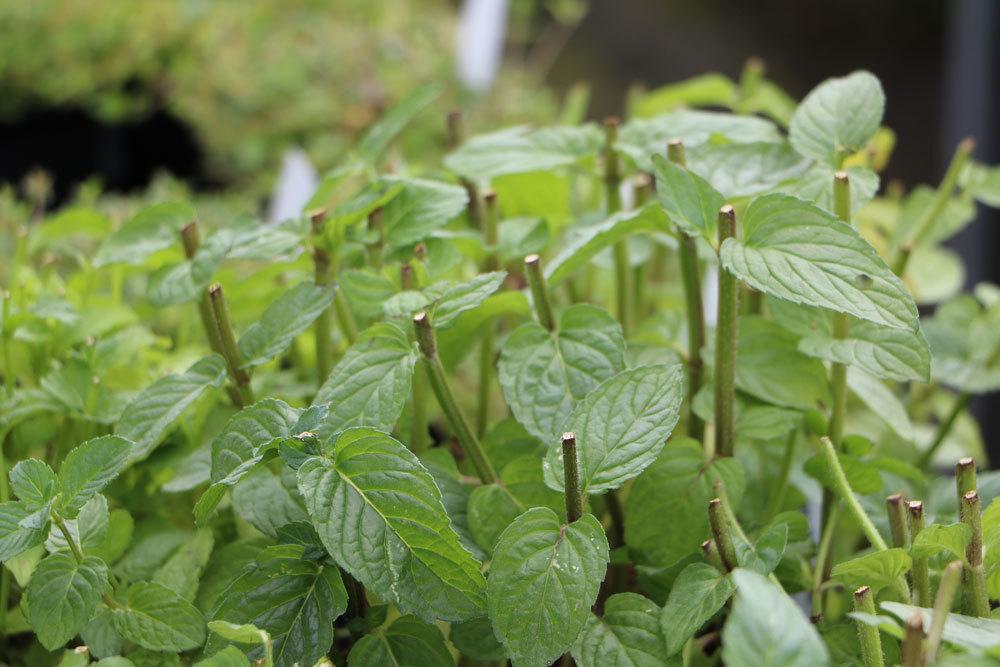Peppermint is one of the most popular herbs. Infused as a tea, fresh in salads or as an ingredient in other dishes, it has long conquered our kitchens. It can be kept in a pot, on the balcony or in the garden. Its relative, the lemon balm, captivates with its fresh, lemony flavor. It is hardy and, like peppermint, has many uses. Both plants are classified as medicinal herbs or medicinal plants. Harvesting is easy. But what happens when the delicious plants begin to bloom?
Contents
Plant family
Peppermint and lemon balm botanically belong to the family of labiates. All representatives of this plant family, which also includes basil and other varieties of mint, are closely related. If the plant genus is considered, peppermint belongs to the genus mint and lemon balm to the genus lemon balm. Thus, there are similarities and differences between the two well-known medicinal herbs.
Peppermint
Peppermint: harvest and harvest time
This tasty herb has two main harvest times. If you only need a few leaves, individual stems can be cut at any time. You can cut fresh mint from May to September. It tastes equally good served fresh or dried. The best time to harvest is just before or at the beginning of flowering. At this time, most of the aromatic substances are stored in the leaves. This is also the appropriate time for the first main harvest.

Proceed as follows for the main harvest:
- Cut off the stems in the morning hours
- cut the stems far back
- Stems sprout anew after harvesting
During the flowering period, which is between June and September depending on sowing and weather, the leaves lose flavor intensity because the plant puts all its energy into its flowers. After all, they serve their reproduction. Nevertheless, you can harvest leaves during flowering, but then the leaves will have a little less flavor. Therefore, flowering mint is best left to the bumblebees and other beneficial insects.
After flowering, shorten the plant. If the shoots have reached a stately size and developed beautiful large leaves, the time has come for the second main harvest. Don’t be surprised if these leaves may taste less aromatic and a bit more tart instead. This is natural and can happen. If the summer was very rainy, the taste of the second harvest will be less intense, because the plant could not form enough aroma. Basically, mint can be cut until the first frost.
If the plant becomes too large or proliferates too much, it can be cut back generously several times until September / October.
Edibility flowers
Edibility of flowers and stems
The peppermint flowers are edible. However, they are not so good for the well-known peppermint tea, as they lack flavoring. Today, peppermint flowers are used as an ingredient in desserts. They also add a freshness kick to summer punch. Lemon balm flowers are mainly made into syrup, as they are also edible.
Since leaves and flowers of mint can be used in cooking without further ado, the statement that the plant becomes poisonous after flowering is nothing but a rumor. Even a flowering balm is completely non-toxic.

The peppermint stems are not a waste product. You can dry the stalks along with the leaves and thus preserve them. If the leaves are needed for seasoning, for example, you can still make a tasty tea from the stems.
Peppermint with mildew infestation
If the leaves of the medicinal plant are covered with a white, floury coating, it is powdery mildew. The fungus is not dangerous to human health. However, for purely visual reasons, we refrain from eating the mint leaves. This does not have to be the case. Since the fungus does not penetrate the leaf of the plant, it can be easily wiped off. The leaves then show their normal, intense green color again. Nothing then stands in the way of consumption.

Tool
The stems of mint and lemon balm can be cut with a sharp knife or scissors. Individual leaves can be pinched off with your fingers.
When cutting, make sure the cut is smooth and does not injure the remaining stem, as injuries to stems are a prime gateway for pests to enter. Individual stems should be cut with care so that neighboring shoots are not injured. If individual leaves are pinched off, care must be taken not to injure the stem.
Lemon balm: Harvest and harvest time
Lemon balm can be harvested several times a year. Since it tastes best fresh, you should always harvest only the amount you need. Harvest time is generally from July to October. To keep the plant compact, cut off the shoots with the leaves. After cutting, the shoots will grow back. This also delays the flowering of lemon balm, because most of the flavor is in the leaves before the plant starts to bloom.
- harvest in the morning hours
- Cut off stems up to 10 cm (quantity as needed)
- Lemon balm sprouts new and blooms again
The flowering period of lemon balm is from June to August. If individual shoots begin to bloom, they should no longer be cut off. They have then not only lost the refreshing taste, but they now even taste bitter. If the whole plant is in bloom, it is better not to harvest at all during the blooming period. Leave the flowering plant to the bees, and cut back the plant after flowering. Depending on the height of the plant, it can be shortened to five centimeters.
After the new shoots can be harvested again until just before flowering. Depending on the needs and size of the plant, this cycle can be repeated until October.
During the winter, planted lemon balm cannot be harvested. Since the plant is dormant during this time, new sprouting does not occur. If lemon balm is cultivated in a pot, it can be harvested, but it is better for the plant to be allowed to rest in this case.









